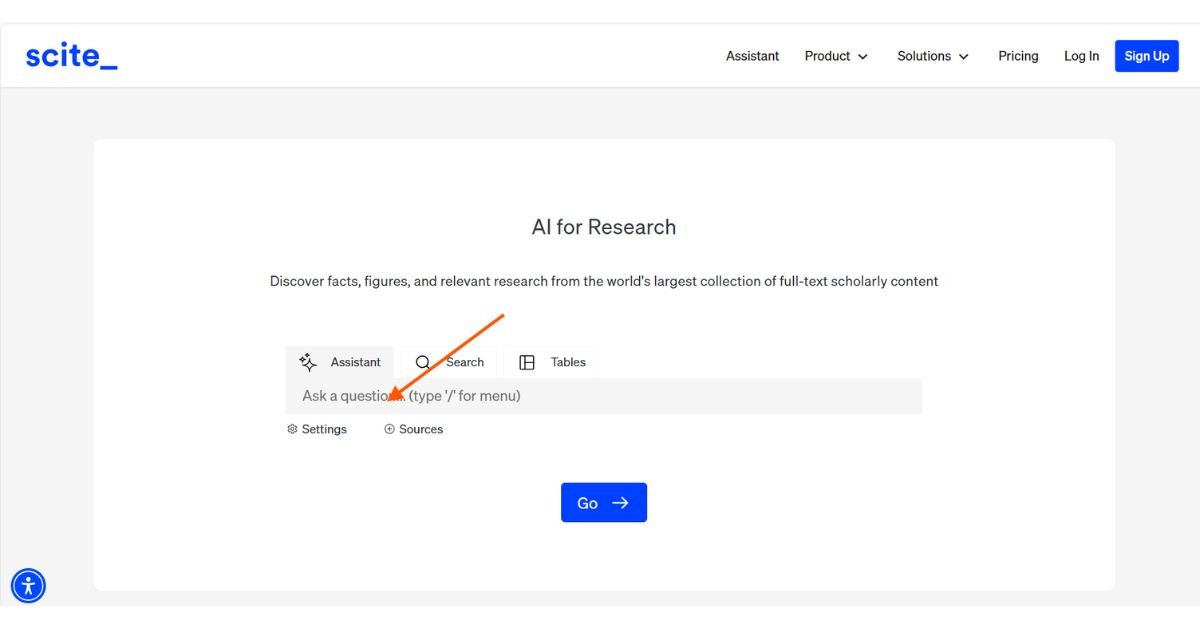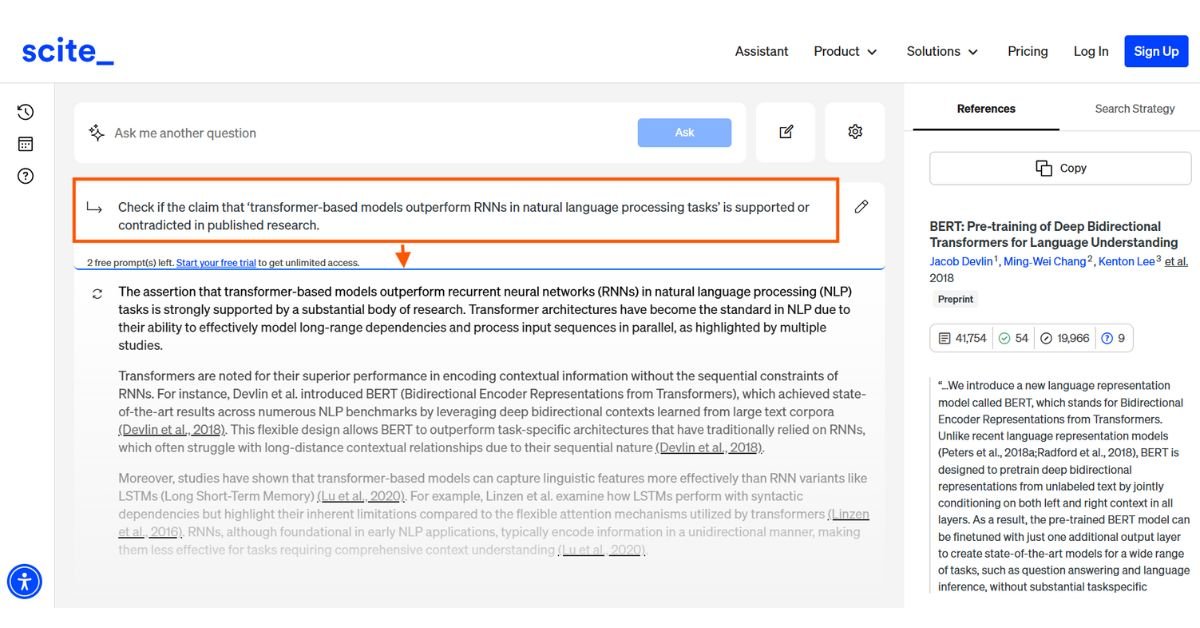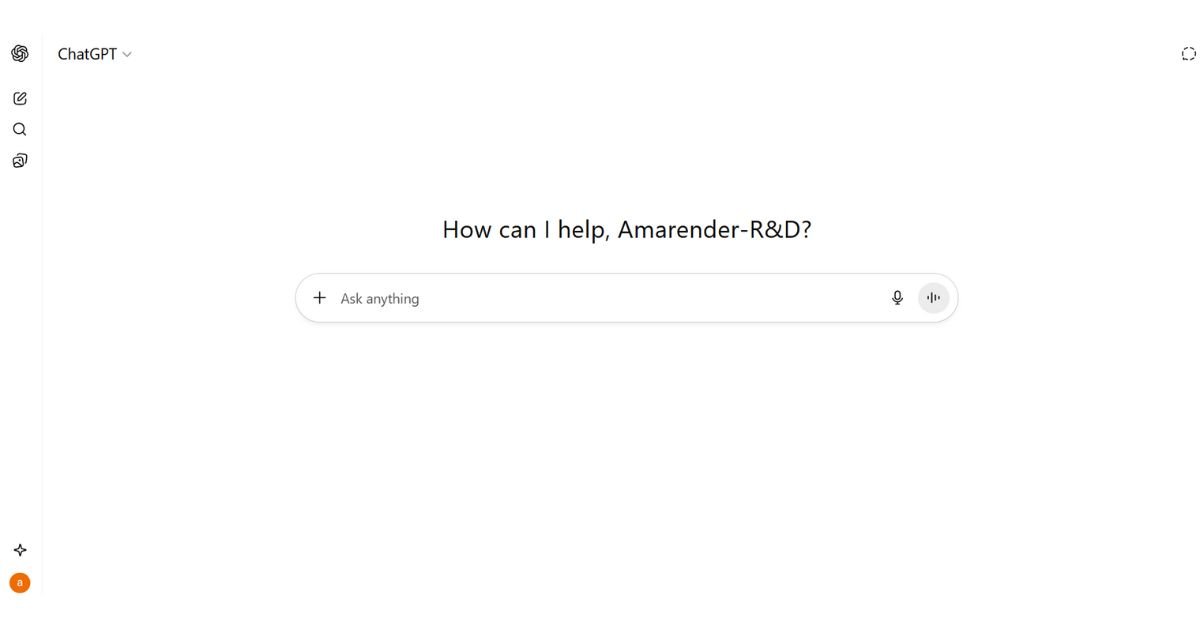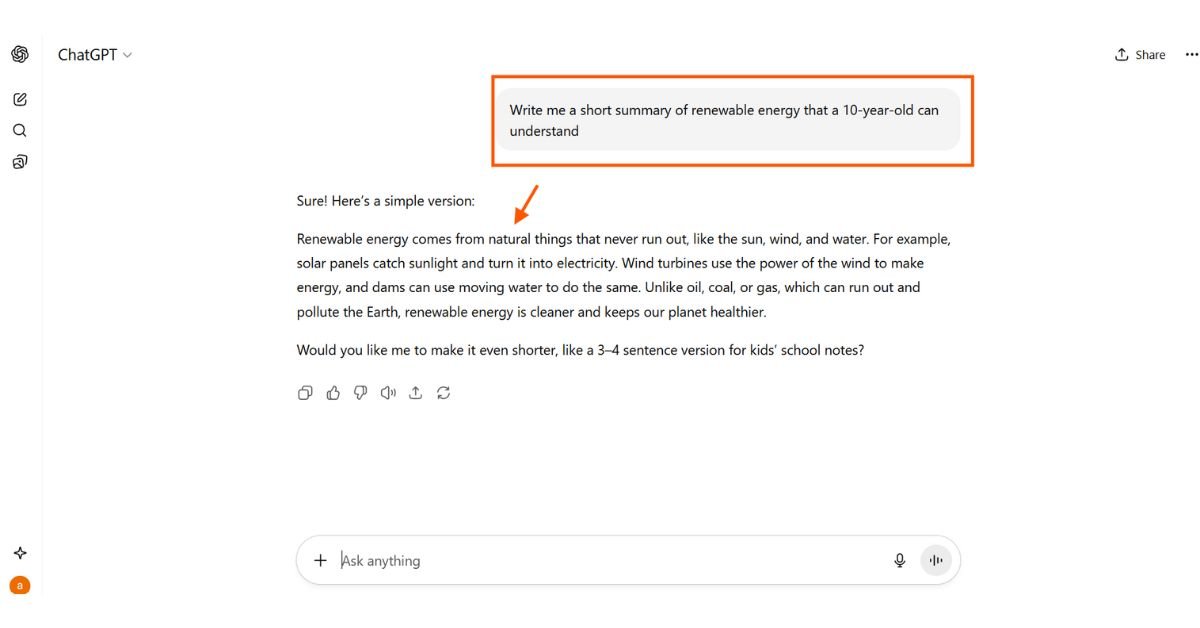It might be hard to choose the correct AI technology these days. Every week, new platforms come out, each one promising to give you greater insights or faster outcomes. Two names stand out from the others for quite different reasons: ChatGPT and Scite AI.
Both technologies employ AI, but their aims and powers are very different. Scite AI is all about making sure research is credible and providing insights based on evidence. ChatGPT, on the other hand, is great at generating natural language and solving problems in conversation.
Choosing the right AI tool can be tricky. If you’re also curious about how different versions of ChatGPT compare, check out our guide on ChatGPT 5 vs ChatGPT 4: An Ultimate Detailed Comparison of Features and Performance
So, when and which one should you use? Let’s put it in simple terms so you can make a decision with confidence.
What are ChatGPT and Scite.AI?
SciCite AI

This is the first screen you see when you open Scite AI. Users may search for scholarly articles, see citation networks, and look at references that support or go against their ideas from here. Researchers that seek organized access to evidence-based insights can use the interface.

I questioned Scite AI if “Transformer-based models work better than RNNs for natural language processing tasks” here. The technique gets evidence from published studies to demonstrate whether the articles support or go against the assertion. This method makes fact-checking a lot more trustworthy than regular search engines.
The purpose of Scite AI is to check the validity of research. It looks at millions of scholarly publications, journals, and citations. Scite doesn’t only tell you if an article was mentioned; it also informs you how it was cited: as support, as a contrast, or merely as a remark.
As a research helper, it helps you check facts. SciCite AI helps you tell the difference between strong and weak claims, whether you’re a student writing a thesis or a scientist checking evidence.
Scite AI builds on a massive database of more than 1.2 billion citation statements across academic literature (Scite Official Site)
ChatGPT

The design of ChatGPT is simple and easy to use. It feels like talking to a buddy. You enter in a query or prompt, and it answers right away in natural language. This tool is more about getting things done, being creative, and having a good chat than Scite AI is.

I told ChatGPT to “write me a short summary of renewable energy that a 10-year-old can understand.” It started making a kid-friendly explanation in only a few seconds. This shows that ChatGPT can change its tone and make hard things easier to understand.
OpenAI produced ChatGPT, which is an AI language model. It accepts suggestions and responds in a conversational style. ChatGPT can do a lot of things, such as answer questions, write essays, brainstorm ideas, and even code.
ChatGPT is widely used for writing, brainstorming, and problem-solving. For a broader look at its real-world applications, see How ChatGPT Simplifies Modern Life: A 360° Guide for Everyone
You may think of it as an AI companion for writing, being creative, and solving problems.
ChatGPT, developed by OpenAI, is designed for natural conversation and text generation (OpenAI Official Page)
Why Compare Them?
At first appearance, Scite AI and ChatGPT don’t seem to be direct rivals. But a lot of individuals who deal with knowledge, including students, professors, professionals, and company owners, use both technologies.
Here’s the problem:
- If you solely use ChatGPT, you could receive fluent but baseless statements.
- If you solely use Scite AI, you’ll get great insights based on evidence, but you won’t be able to do as many broad jobs.
- You can pick the perfect tool for your needs by comparing them.
Important Things to Think About When Comparing
To make things apparent, let’s look at five crucial aspects where Scite AI and ChatGPT are different:
- Function and Purpose
- Sources of Data and Their Accuracy
- Simple to Use
- Good and bad points
- Best Use Cases
1. Main Function and Purpose
Scite AI: Designed to check claims and look for citations. Its major goal is to assist researchers in figuring out how good the evidence is.
ChatGPT: A tool for making text sound natural and helping with everyday tasks like writing, summarizing, or coding.
The main difference is that Scite checks facts. ChatGPT makes things to read.
2. Where the data comes from and how accurate it is
- Scite AI uses a collection of more than 1.2 billion citation declarations from academic literature. The results are based on research that has been published.
- ChatGPT: It was trained on a large number of books, webpages, and online content up to its final update. It doesn’t link directly to active academic databases, but it can work with plugins.
- Big difference: Scite’s accuracy depends on data that has been peer-reviewed. How thoroughly ChatGPT was trained and if the user analyzes the output for correctness determine how accurate it is.
3. How easy it is to use
- Scite AI: The UI makes it seem like a tool for doing research. You may look for publications, see citation graphs, and compare data that supports and goes against your point of view. Good for students; however, casual users could find it hard to utilize.
- ChatGPT: It feels like talking to a clever buddy. You enter in your inquiry, and it gives you an answer in clear English. No need to learn anything.
The main difference is that Scite is organized and focuses on research, whereas ChatGPT is more flexible and conversational.
4. Strengths and Limitations
| Feature | Scite AI | ChatGPT |
| Main Strength | Verifies claims with citation analysis | Generates fluent, versatile text |
| Best For | Researchers, academics, scientists | Writers, students, businesses, creators |
| Data Source | Peer-reviewed papers & journals | Wide text datasets (not always peer-reviewed) |
| Accuracy | High in research validation | Varies, needs fact-checking |
| Limitations | Narrow focus, less creative | May “hallucinate” facts |
5. Best Use Cases: When to Use Scite AI
- Finding out if there is research to back up a medical claim.
- Checking to see if a reference backs up or goes against a claim.
- Making sure your paper is based on reliable sources.
When to use ChatGPT
- Quickly writing an email, blog post, or essay.
- Coming up with company concepts or marketing text.
- Taking large articles and making small notes out of them.
- Writing initial drafts and then using research methods to make them better.
Examples from the Real World
Example 1: A student
- A student who is preparing a research paper about climate change may utilize ChatGPT to help them develop an outline. They then utilize Scite AI to check if the assertions they made are backed up by new research.
Example 2: A person who works in business
- A marketer may utilize ChatGPT to develop a campaign for social media. But if they utilize a statistic, they would employ Scite AI to make sure it is correct and based on data that has been vetted by other experts.
Example 3: A Researcher
- A PhD student might use ChatGPT to come up with ideas or make complicated theories easier to understand, but when it comes time to write the last chapter of their thesis, they might use Scite AI.
What I Suggest
Scite AI is the better choice if your work has to be credible, accurate, and academically rigorous. It makes sure that your statements are based on facts.
- ChatGPT is the most flexible and easy-to-use tool whether you want to be more productive, creative, or communicate better.
- In my opinion, the greatest way to work is to use both:
- ChatGPT can help you come up with ideas, organize them, and write them down.
- Before you finish, use Scite AI to examine the facts and make sure they are correct.
- In this manner, you may trust Scite AI and obtain the speed of ChatGPT.
In short, here are the main differences:
- Scite AI is a way to verify the trustworthiness of academic work.
- ChatGPT is a creator for tasks that can be done in a flexible way.
- They get along really well.
It depends on what you want to do, whichever one you choose. Scite AI is the place to go for truth. Go to ChatGPT if you require text. Use both at the same time if you want both.
If you’re exploring how ChatGPT connects with other AI tools, especially for creating media, don’t miss our list of 6 Best AI Video Generators to Easily Create Videos from ChatGPT Prompts
Disclaimer: Screenshots of Scite AI and ChatGPT are used for educational and illustrative purposes only. All trademarks and product names are the property of their respective owners.
Image Credits: Screenshots from Scite AI and ChatGPT platforms. Used for educational purposes under fair use.

Hi, I’m Amarender Akupathni — founder of Amrtech Insights and a tech enthusiast passionate about AI and innovation. With 10+ years in science and R&D, I simplify complex technologies to help others stay ahead in the digital era.



